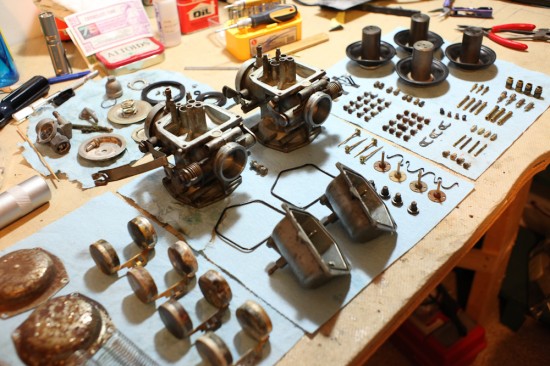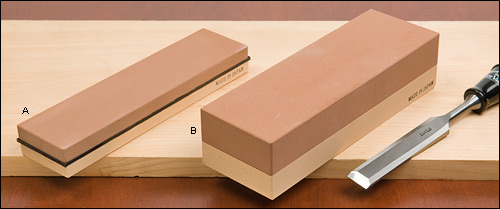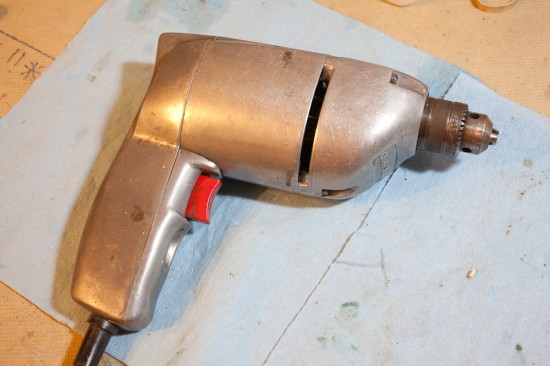Carburetor disassembly
Finally! A full can of carb cleaner, half a can of WD-40, four days of soaking, many hours of scrubbing and scraping, and a couple of damaged jets and stripped screws later, I have the carburetors disassembled and cleaned of all that sticky tar.
There are parts from all four carbs laid out there. The two missing bodies and float bowls, the “spares”, are still soaking; turns out that dry corrosion is much worse for moving parts than 30 years of semi-liquid gum and varnish. Corrosion eats right into the parts, chemically bonding them together and ruining surface finishes, but that black tar did a surprisingly good job of preserving whatever it was sitting on. Though a couple of minor pieces were damaged in removal or just plain fell apart from age, all told I have more than enough pieces to make two good-condition Keihin 722As and maybe a third.
Next step — reassembly! And maybe polishing the outsides if I can pick up some more polishing compound for the Dremel. I’ll probably end up painting those badly rusted top covers (far left) but the rest of it would look just fine as bare, clean aluminum, I think.


